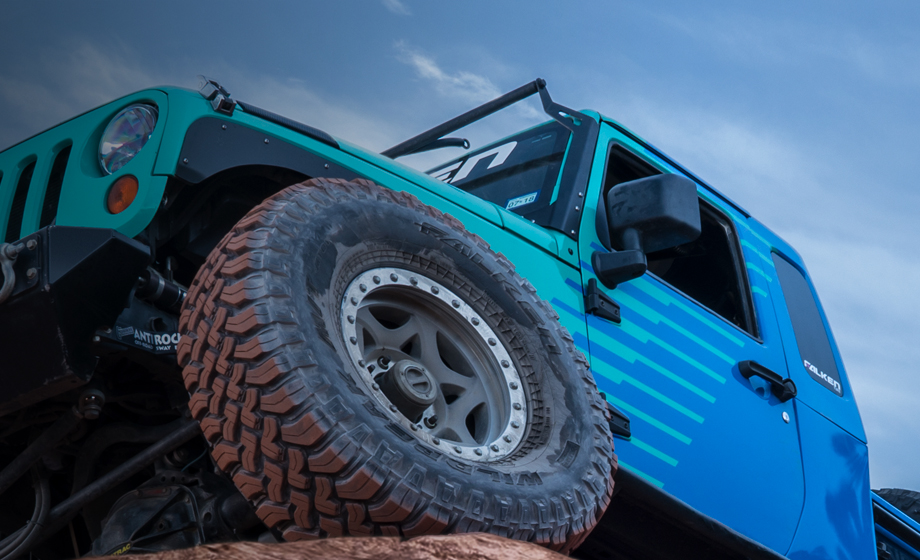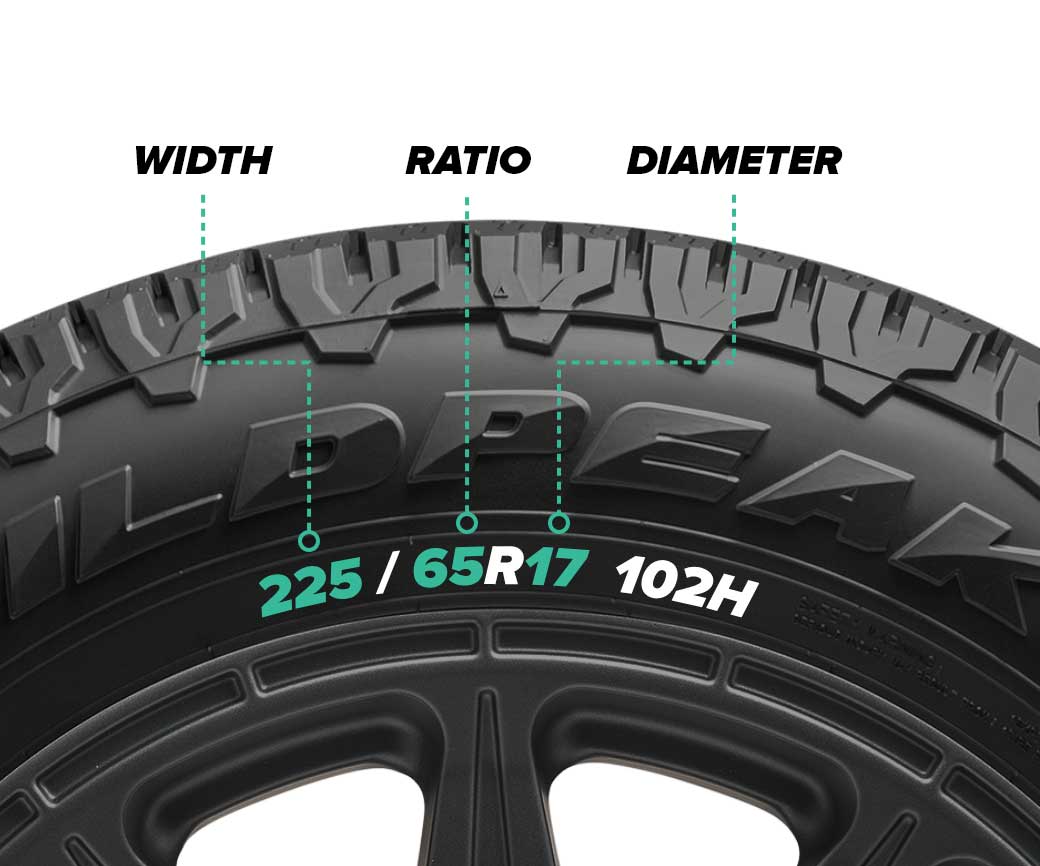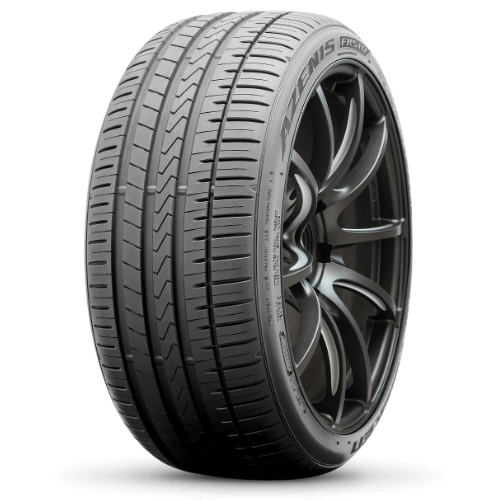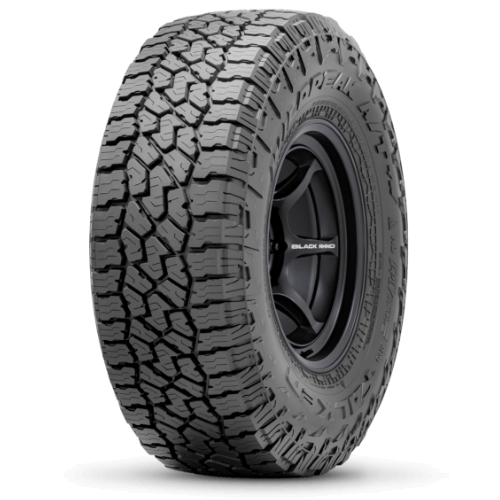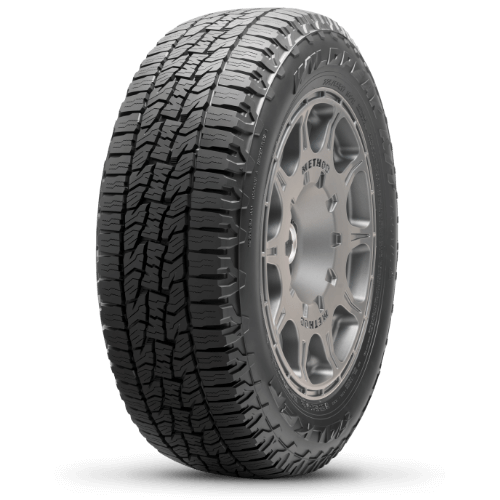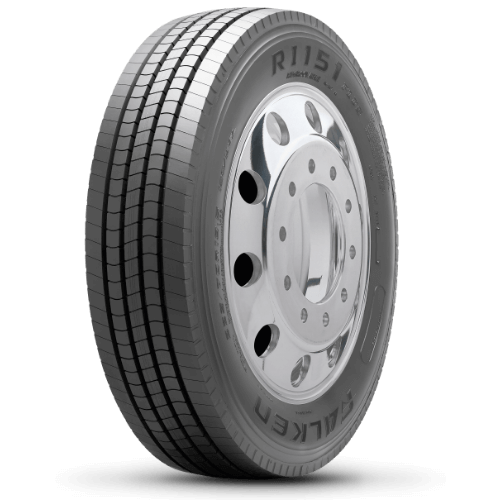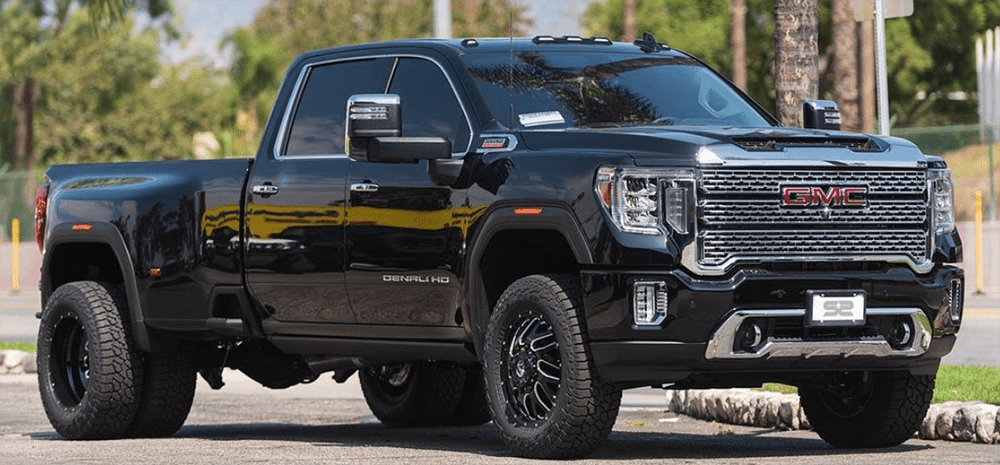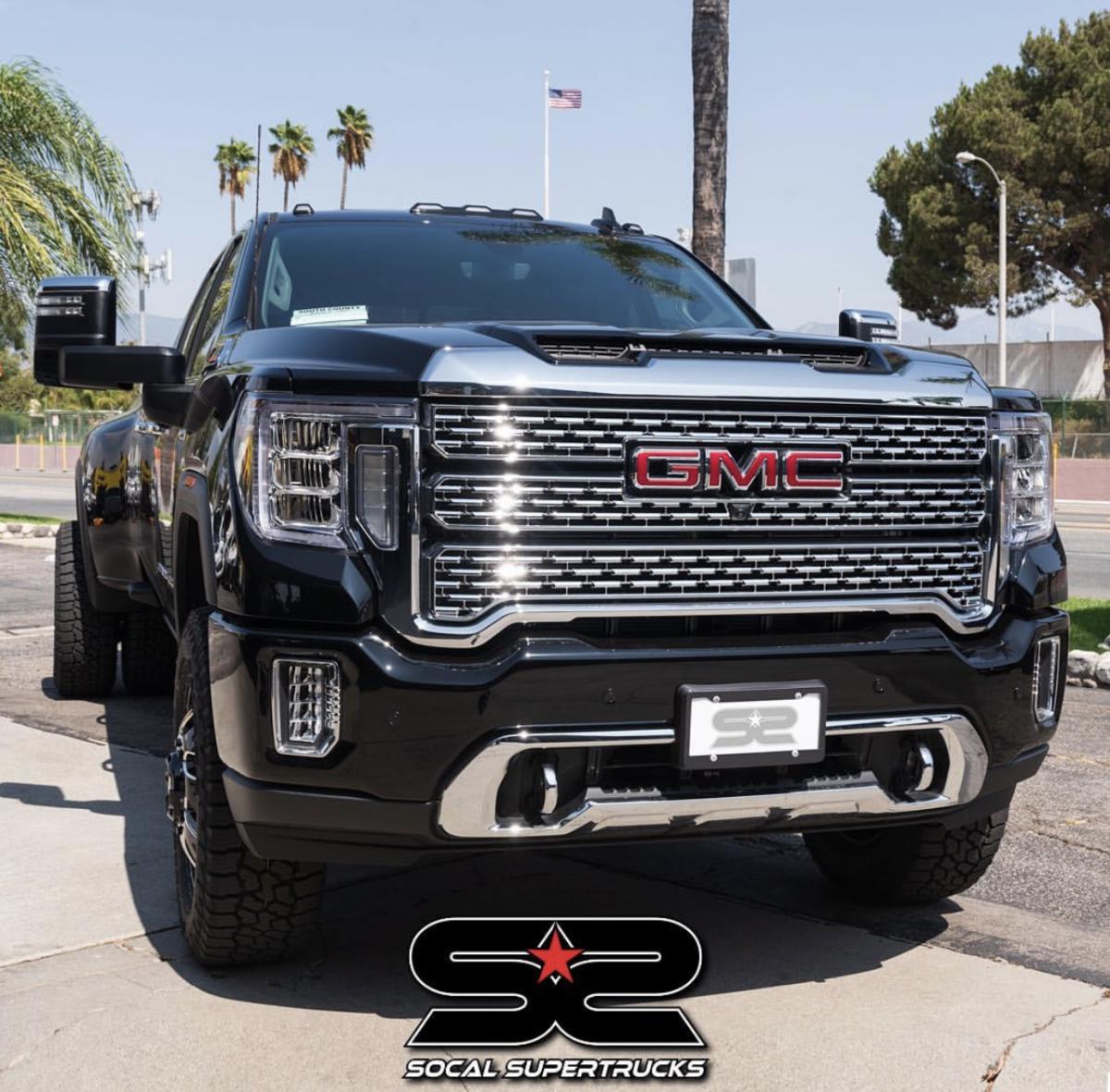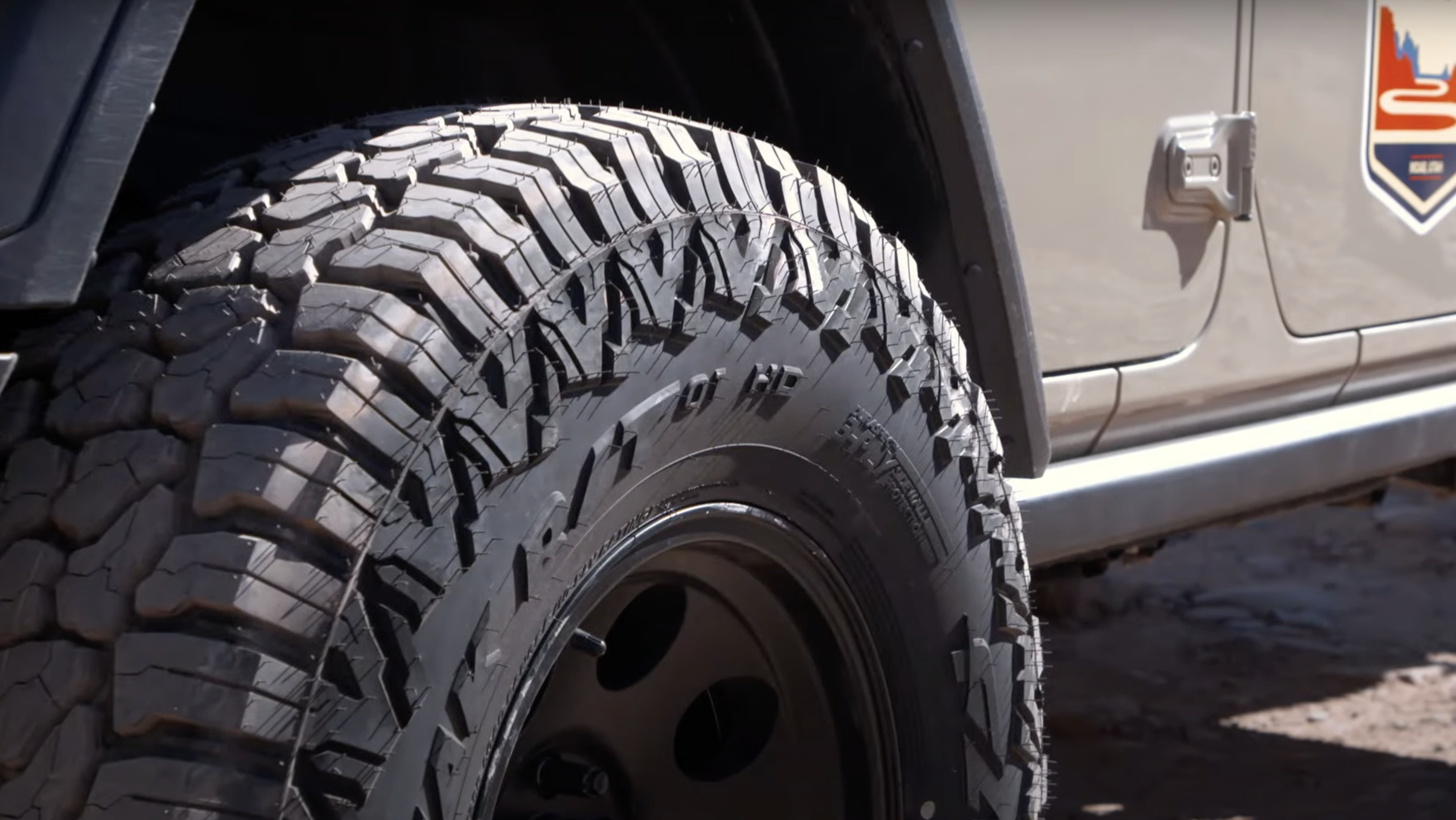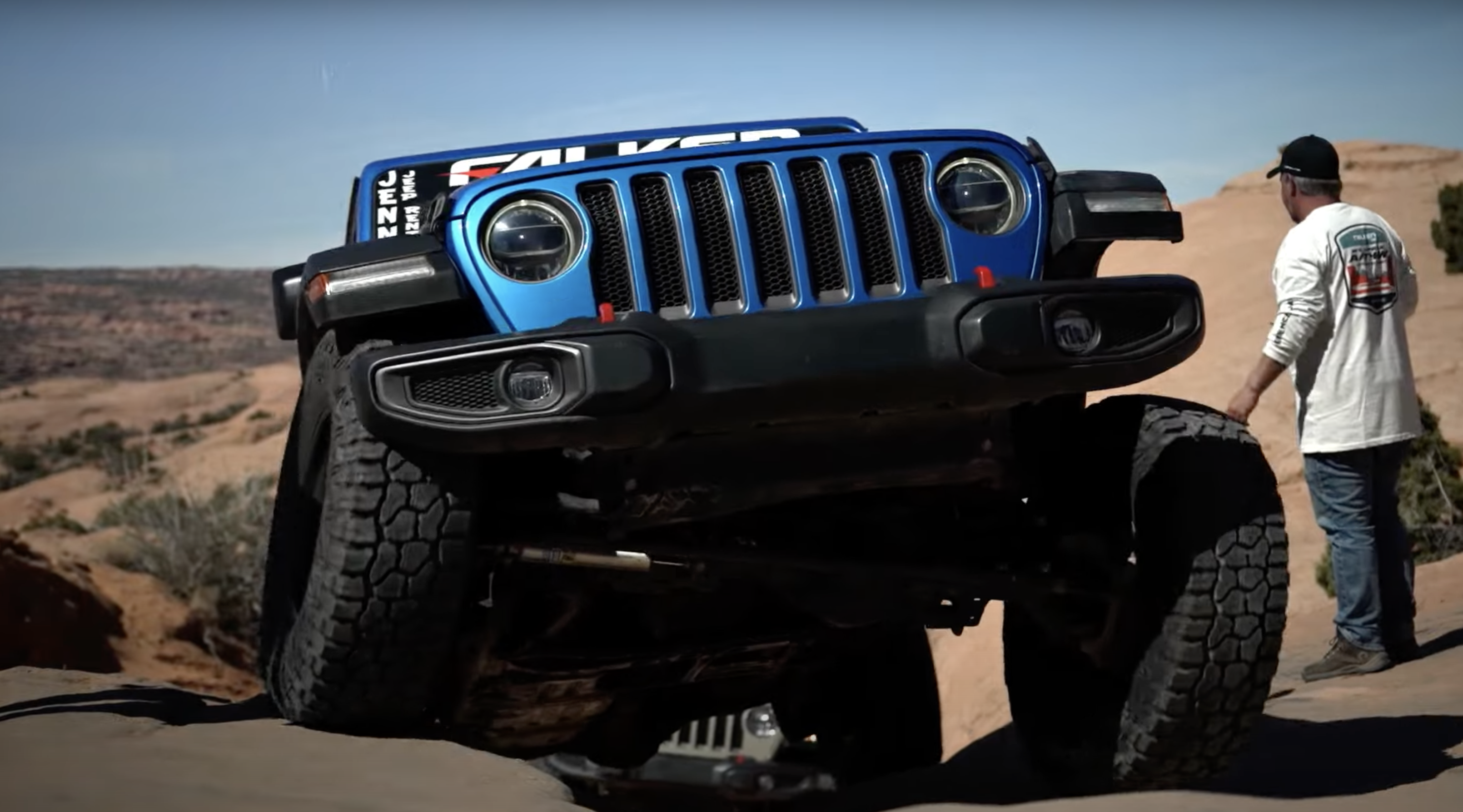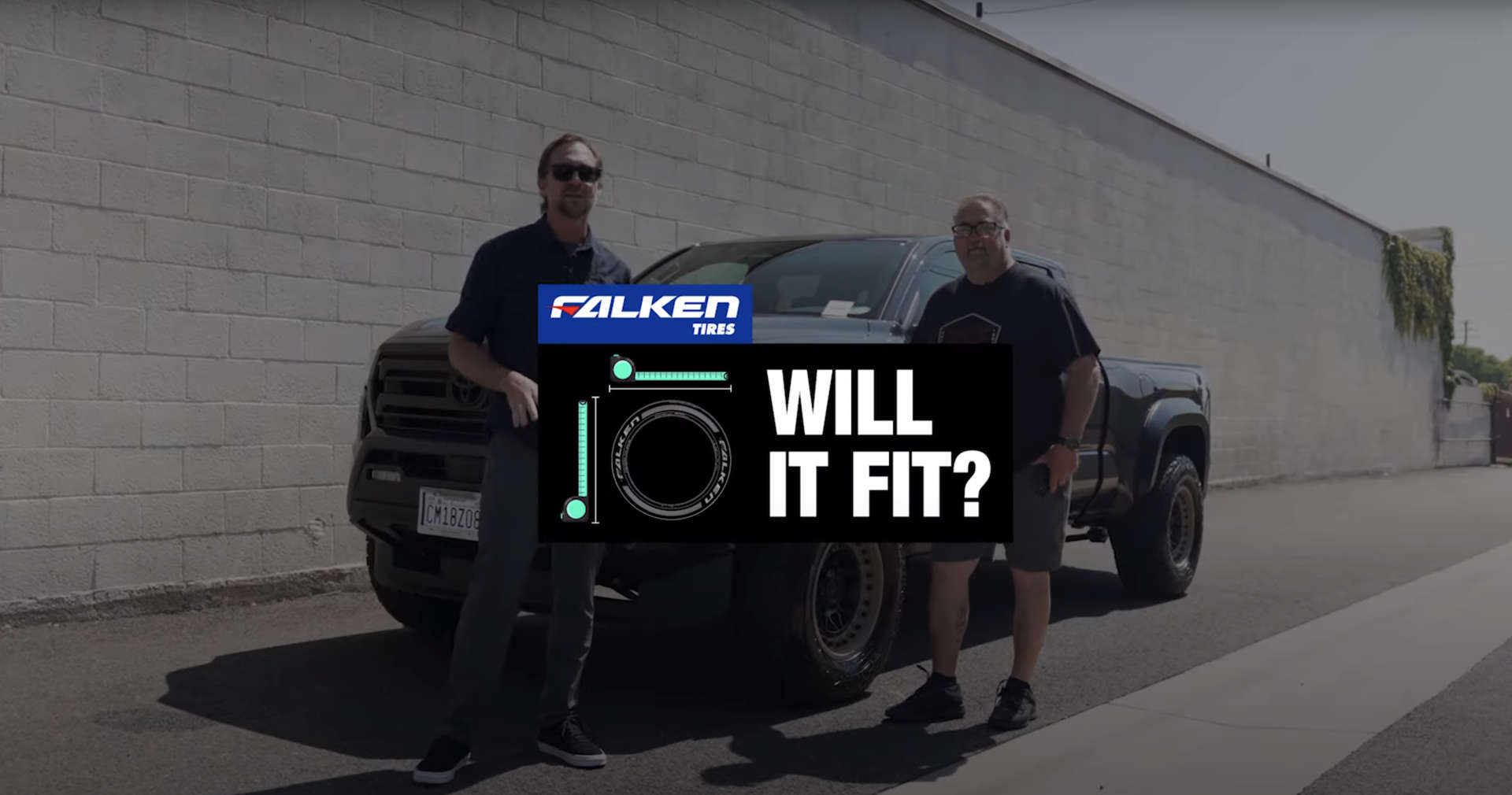Community - Load Range F Tires Explained | Falken Tires
Load Range F Tires Explained
Watch Falken's Bakari Howard (Product Training) and Drew Howlett (Product Planning) discuss the trend of running larger tires on today's HD 3/4 and 1-Ton pickups, and why Load Range F tires are now becoming an important part of Falken's Light Truck tire lineup.
Video Transcript Below
Bakari Howard: Welcome, everyone, to this very special episode of Falken Tire Tech. Today I have Drew Howlett with me, Falken’s Product Manager for Light Truck and SUV Tires. And today we have a very special topic. Drew, we're going to be talking about why Load Range F is so important. So let's start with the basics: what is Load Range F?
What Are Load Range F Tires?
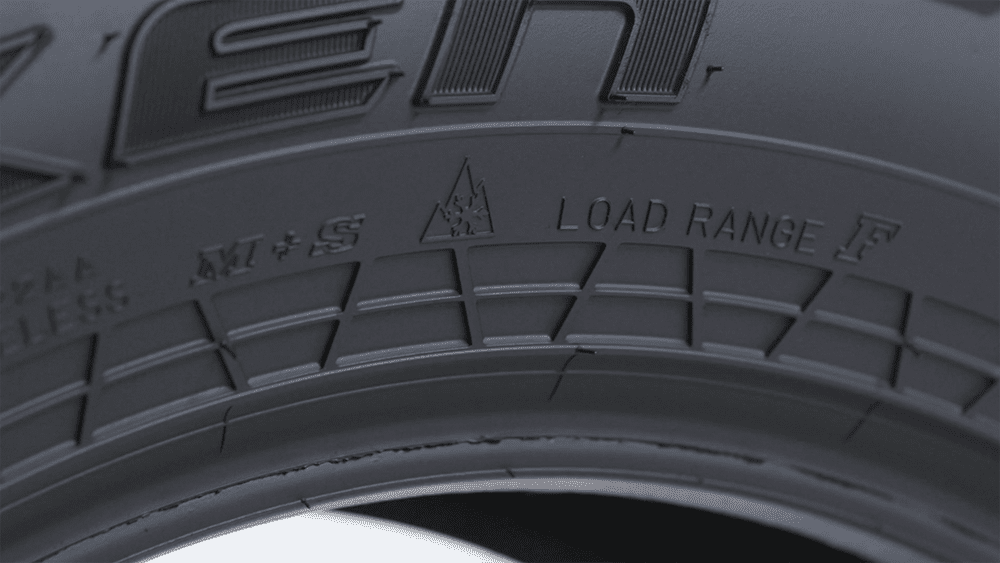
Drew Howlett: First, let's talk about what a load range is. Basically, it's a range of loads at a specified tire pressure that the tire can actually carry. So, for example, on a light truck tire, typically you'll see a Load Range C or Load Range D or Load Range E on the sidewall. And each of those letters corresponds to a range of loads that the tire is capable of carrying, and at a specified pressure as well. So typically that Load Range C, for example, carries a range of loads at 35 to 50 PSI. Load Range D, up to 65 PSI. Load Range E, up to 80 PSI.
Tire Ply-Ratings
Bakari: So speaking of load range, is it safe to say that since a Load Range E is 10 ply, would a Load Range F be 12 ply?
Drew: That's safe to say in a sense, because in the past we compared and classified tires by a ply rating. So typically we would say a tire is 6-ply rated, 8-ply rated, or 10-ply rated, and those correspond to Load Range C, D, and E respectively. So of course a Load Range F does correspond to a 12-ply rating.
Bakari: Now is it actually 12 plies or 10 plies laid out when the tire is manufactured?

Drew: That's another really good question. The 12-ply rating doesn't actually mean that the tire has 12 different plies or 12 layers. It's really just the way to classify the tire and to ensure that the manufacturer tested it to meet that 12-ply rating and/or that Load Range F requirement. As you move up in the load ranges, there are much more stringent testing requirements when it comes to things like endurance and high speed testing and all the safety testing that a tire manufacturer does, especially once you get to Load Range F.
What's a Load Index?
Bakari: Do load range tires also have a load index? Because I see on this particular tire it reads 125 and that's technically a load index, right?
Drew: That's correct. So every tire, regardless of whether it's a light truck or a passenger car tire, is going to have a load index. And that load index is nothing more than a reference to an equivalent load carrying capability or capacity in pounds or kilograms. So each load index number has a weight carrying capacity associated with it.
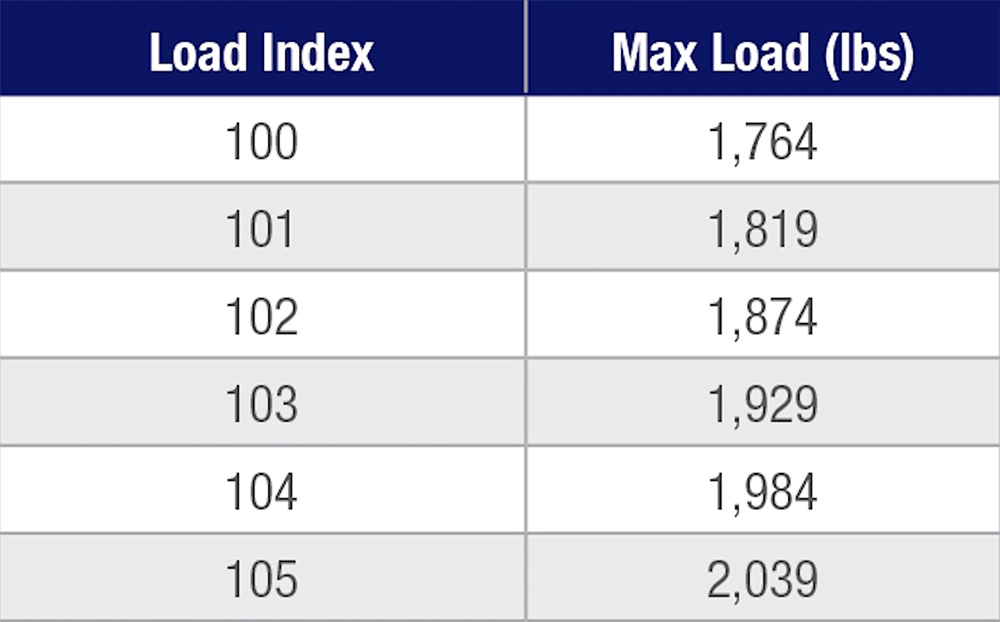
Bakari: Gotcha. So with light truck specific tires, you essentially have two designations. You have a load range and then you have the three digit number, which is typically more of an index.
Drew: Correct. And that index will be the exact maximum load carrying capability of that tire.
Why Load Range F?
Bakari: Going back to Load Range F, why is there a need for that? Why does that even exist?
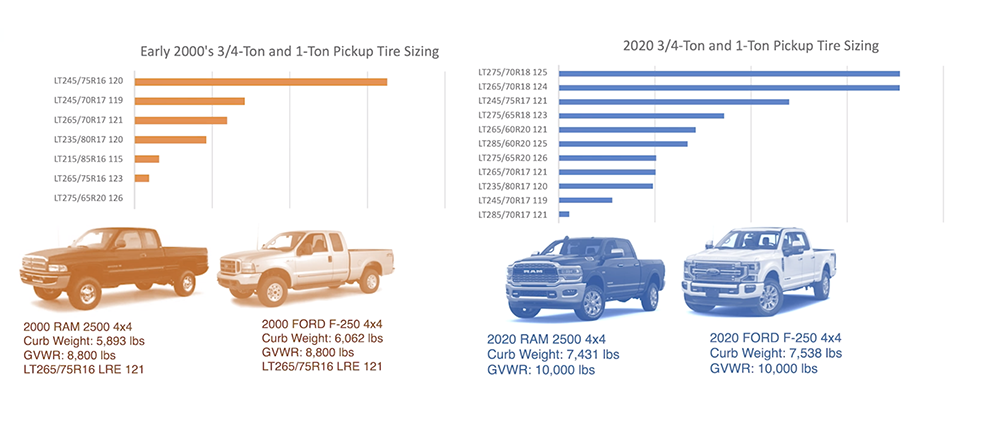
Drew: There are two basic overlying trends that have posed the need for Load Range F in today's market. You can see the first trend if you look back at ¾ ton and one ton pickups over the past 20 years; I'm talking about Ford F-250 and RAM 2500. These vehicles have gotten significantly heavier over the years.
Bakari: Which makes sense. New technologies, people want more.
Drew: Right, exactly. And more power, bigger diesel engines, more carrying capacity, more towing capacity.
Bakari: …Touch screens.
Drew: Yeah, and that’s not even to mention the electronics and all the safety features that these vehicles have today. So a typical GVWR (Gross Vehicle Weight Rating) for a typical RAM 2500 or F-250 today would be about 10,000 lbs. That means everything you have in the pickup bed and everything you have inside; all your kids in the back, fully loaded. That's the maximum amount that you can carry legally in that vehicle.
Bakari: Now, if I have a truck, where would I find this information so I can know what my GVWR is?
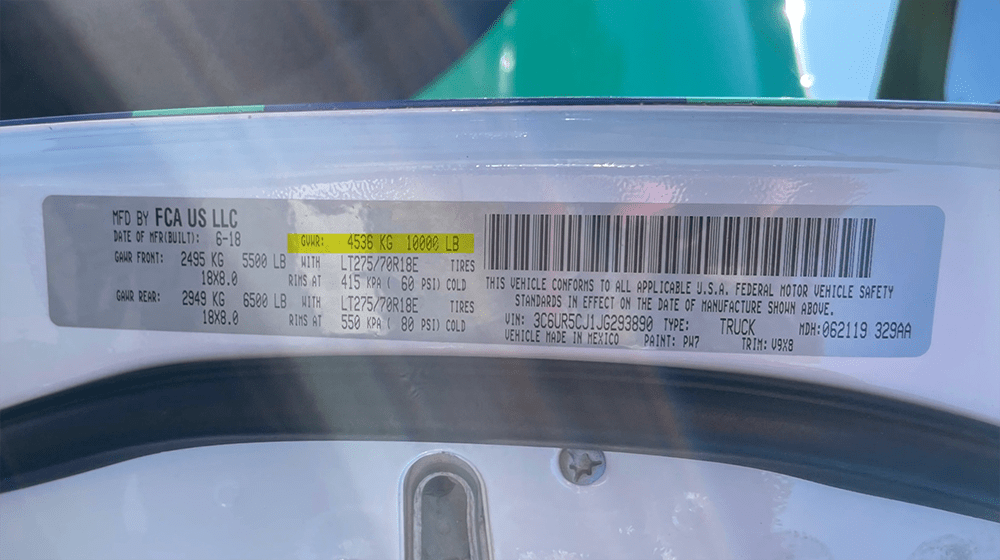
Drew: Inside the driver's door. If you open up your driver door typically you'll find a sticker, what we call a door placard. This states both the GVWR as well as the tire information.
Bakari: Alright Drew, you gave us a lot of information on that, but you also mentioned there's two reasons why Load Range F exists. So what's the other reason why it exists?
Upsizing Your Tires
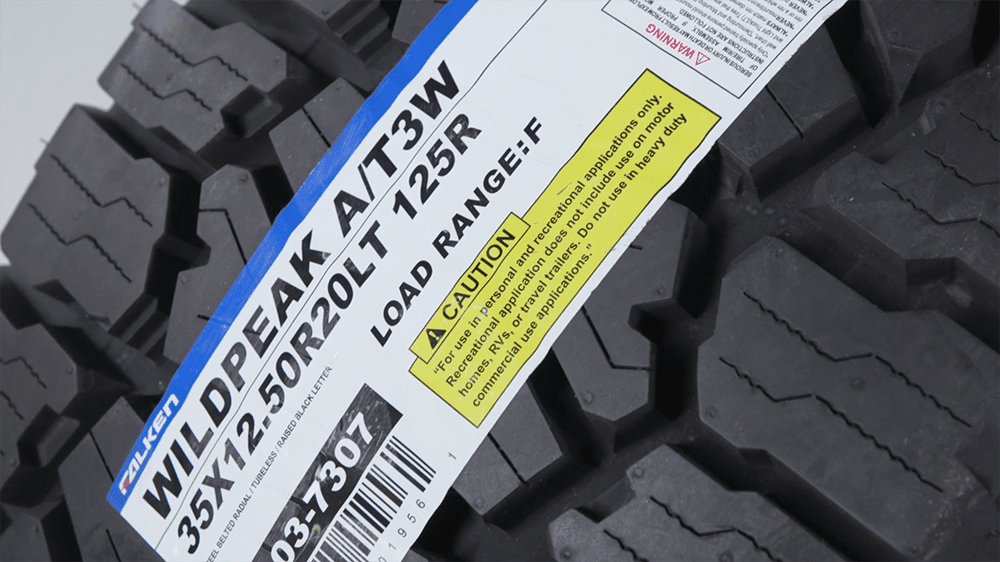
Drew: Bakari, the answer really is right behind us. The trend of aftermarket larger tires.
Bakari: 35x12.50x20
Drew: Exactly. I mean, with a simple leveling kit, a lot of these modern trucks can fit a 35x12.50x20 tire.
Bakari: It looks so much better.
Credit: SoCal Super Trucks Instagram
Drew: It does, and we understand the trend. But, I think from the manufacturer’s point of view, we need to make sure these larger aftermarket tire sizes have the proper load index to meet or exceed the original equipment tire’s load index.
Match Your Tires' Load Index
Drew: So, for example, we talked about this tire having a load index of 125. We need to make sure that this tire actually has the same or higher load index when compared to the OE tire. For example, on a RAM 2500 a typical size would be an LT275/70R18 with a load index of 125 and a Load Range E. Now we would be able to match that with a Load Range F offering in a 35x12.50x20, also with a load index of 125.
Bakari: So, Drew, what you're saying is if my vehicle came from the factory on tires with a load index of 125, I need to replace those with another set of tires with a load index of 125 if I want to plus size and get new wheels?
Drew: Well, not technically. What I'm saying is that’s the best rule of thumb. You're completely safe if your aftermarket tire has load index that is the same or higher than the load index of your OE tire. There are always exceptions to the rule, though. For example, if the OE tire had a load index of 125 and an OE pressure at 50 psi, it’s possible that you could use an aftermarket tire with a lower load index, but you would likely have to increase the pressure of the aftermarket tire.
Each tire carries a specific load at a specific pressure. So it's important to familiarize yourself with load inflation tables and be able to match the OE tire’s load carrying capacity at the OE pressure to the aftermarket tire’s load carrying capacity at its aftermarket pressure. So it is possible.
Or Check the Load Inflation Chart
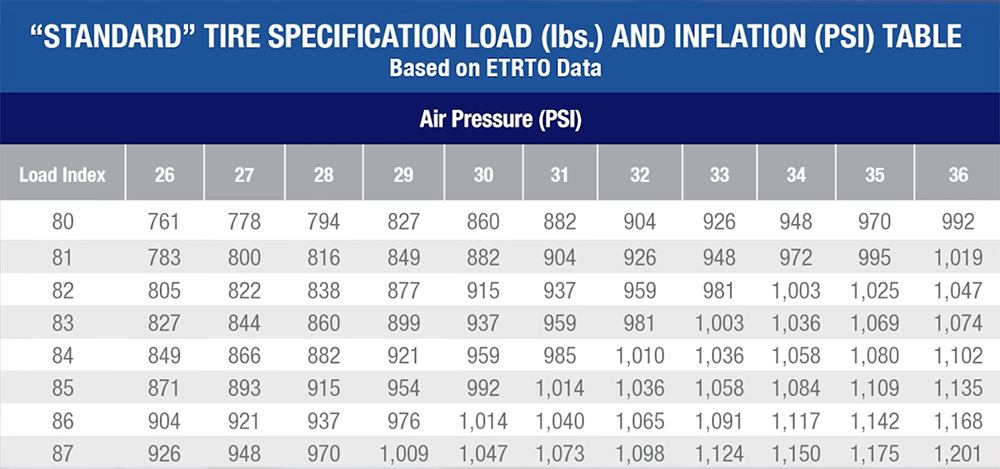
Bakari: Load inflation chart? What is that and where can someone find it?
Drew: You can find a load inflation chart typically on our website. And that's a really great resource because you can find each tire’s load carrying capability for a given pressure and load index.
Bakari: I think I've seen one of these before. You can essentially match up the PSI and then figure out that particular index and how much weight the tire can carry at that pressure.
Drew: Exactly. And that way you can always match the load carrying capacity of your aftermarket tire to that of your OE tire. And, Bakari, that's something that we really need to talk about because it's important. The OEM, meaning the manufacturer of the vehicle, designed each vehicle with a specific tire that has a safety margin associated with it. So we talked about GVWR and how a vehicle can weigh 10,000 pounds. Typically what you'll find is the four tires that support that vehicle can carry more than 10,000 lbs, and that's by design.
So, this is why it's really important. We don't want to use a lower load carrying capability on our aftermarket tires when compared to the OE tires because there is a safety margin already designed into those four tires that came standard on the original vehicle.
Bakari: But what about with the exception you talked about?
Drew: Same goes for the exception. You’ll still need to achieve that same load carrying capability, even if you have to increase the inflation pressure slightly. And again, that's important. You have to match that same load carrying capacity of all four tires to that of the OE tires because, again, there is a factor of safety that was built into the vehicle to make sure the occupants and payload can be carried safely.
Bakari: So basically, the most important part is being equal to or greater than the load carrying capacity of our OE tires, regardless of how we get there. We can either get there by having a tire with the equivalent load rating on the replacement side, or doing it by air pressure on a lower load index tire.
Drew: That's correct. To make it simple, if you don't want to go down the technical details and frustration of these load inflation tables, the easiest and safest way is to make sure that the aftermarket load index matches the original equipment tire’s load index.
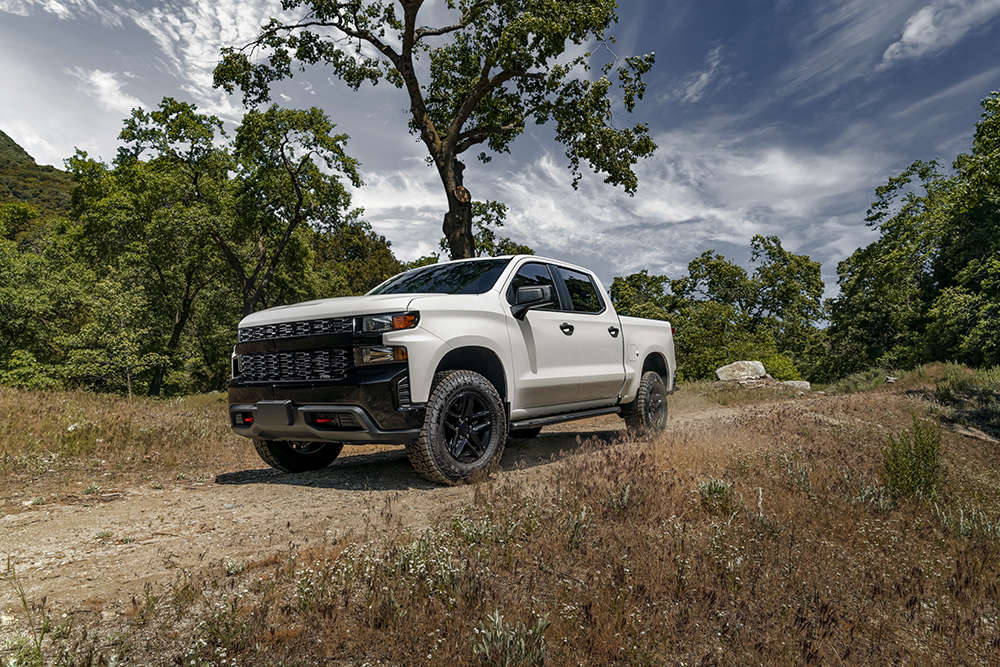
More Questions?
Bakari: Drew, we went over a lot of information today. If someone has more questions about the topics we covered, where can they go as a resource?
Drew: Honestly, our website has tons of technical information. For each of our product lines, you can find all of our technical specifications, such as the load index, load carrying capacity, max pressure, all of those things we talked about today. We also have the load inflation tables on our website that you can refer to, as well as all of our contact information if there are still questions.
Bakari: Drew, thanks for being on today. I think our viewers learned a lot.
Drew: Thanks for having me, Bakari.
Bakari: Well, that's it for now. Until next time.
